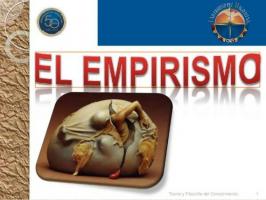The conception of the SOUL of PLATO
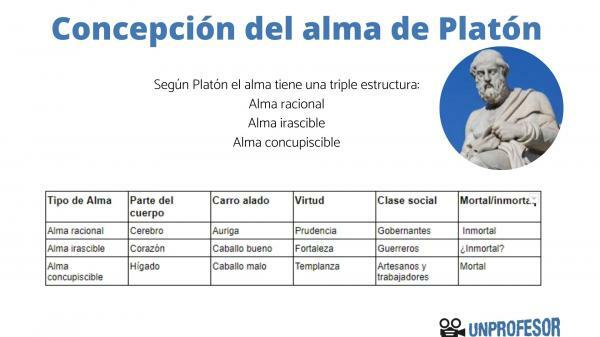
In this lesson from a TEACHER we will analyze the first school of philosophy, Plato's conception of the soul. The concept of Soul according to Plato is that we are Soul, who has never been born and will never die, what happens is that this same soul has different bodies throughout its life, from this idea emanates the concept that the Soul is immortal.
In this lesson we are going to discover what Plato's theory of souls is and understand the classification that the philosopher performs on the human being. We started!
Index
- Summary of Plato's conception of the soul
- The Platonic Conception of the Soul
- The three parts of Plato's soul
- The rational soul, according to Plato
- Irascible soul
- The Concupiscible Soul
Summary of Plato's conception of the soul.
Plato he was a Greek philosopher follower of Socrates and teacher of Aristotle. In 387 he founded the Academy. According Plato the soul has a triple structure:
- A rational soul
- An irascible soul
- One to the concupiscible
All humans according to Plato have the three souls, but each one has a different measure of each soul. This theory is developed in the myth of the Winged chariot.
The platonic conception of the soul.
For Plato the soul is that which "animates" the body, which gives it life, but it is also the principle of rationality that enables the human being to know and lead a good life. Plato's soul has a divine character, and therefore survives the death of the body, returning at last, to the world of Ideas.
And it is that according to the Greek philosopher, soul belongs to the intelligible world, but accidentally fell into the sensible world, being trapped in the jail that is the body. The soul is the best part of the human being, principle of reason, through which the human being can achieve knowledge, truth, beauty and good. The rational part of the soul does not die with the body, but rather survives death.
“As for the part that he knows, it is clear to everyone that he always and completely tends to know the truth, wherever he may be, and that nothing matters to him less than riches or reputation. "
Plato's Winged Chariot Myth
In the Phaedrus Plato explains the nature of the soul comparing it to a car led by a charioteer and two winged horses. One is docile, and the other is quite the opposite. One pulls upwards, towards the world of Ideas. The other pulls down towards the sensible world. The charioteer therefore has trouble driving the chariot (Myth of the winged chariot).
"The soul is like a chariot of winged horses and a charioteer that form a unit. Now, the horses and charioteers of the souls of the gods are all good and of excellent lineage; those of the other souls, however, are mixed. Our charioteer governs the couple who drives; one of his horses is beautiful and good and of similar parents, the other is the opposite in both respects. Hence, driving is hard and difficult for us. "
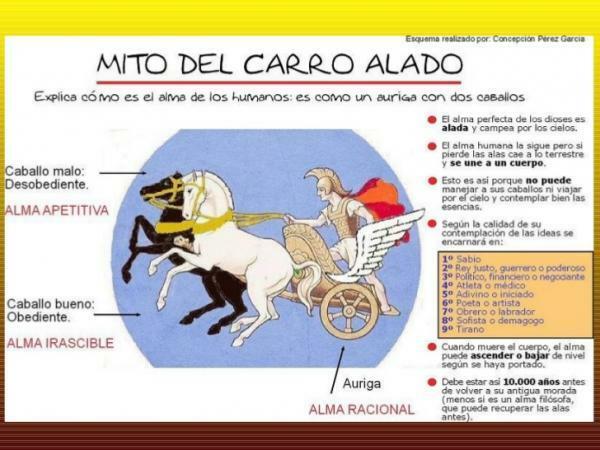
The three parts of Plato's soul.
The one from Athens assures that there is three parts in the human soul:
- The rational part
- The irascible part
- The concupiscible or appetitive part
But in each individual dominates a over the other. Based on this, according to the dominant party, each person has a virtue and a place in the polis. Justice, for the philosopher, consists of a balance between these three parts of the soul.
“There is a part, we said, with which man knows; another, with which he becomes angry, and a third which, due to its variety, it was not possible to find a suitable name; the latter, in attention to the most important and the strongest in it, we call the concupiscible part ”.
In the myth of the winged chariot he illustrates his theory as follows:
"Let us imagine, then, that (the soul) resembles the conjunction of forces that exists between a trunk of winged steeds and a charioteer. Well, (...) there is first the driver who takes the reins of a team of two horses, and then the horses, among which he has one beautiful, good and of such a race, and another that of nature and race is the opposite of this. Hence, out of necessity it is difficult to drive our car. "
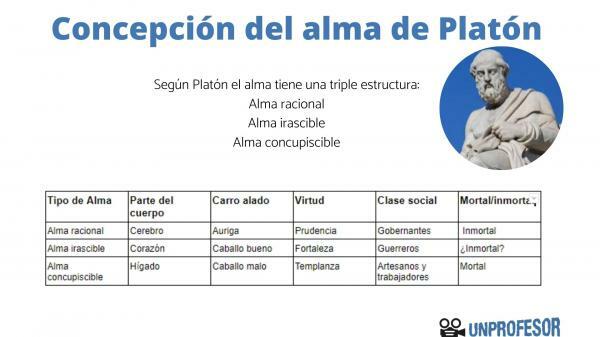
The rational soul, according to Plato.
This is the most excellent part of the human soulIt is immortal and divine in character and it is through it that the individual can come to know and know how to live according to good and justice. It is located in the head, specifically in the brain.
"... This must be called with all justice lover of science and knowledge ..."
In the "myth of the winged chariot", the charioteer represents the rational part of the soul, the supreme part, the principle of rationality. The reason, then, tries to lead the other two parts on the right track.
The virtue that corresponds to him is prudence or Fronesis, and in the polis they would belong to the class of rulers.
With the death of the body, the soul will ascend again to the world of Ideas, from which he fell silent by incarnating in a body, which Plato considers the prison of the soul.
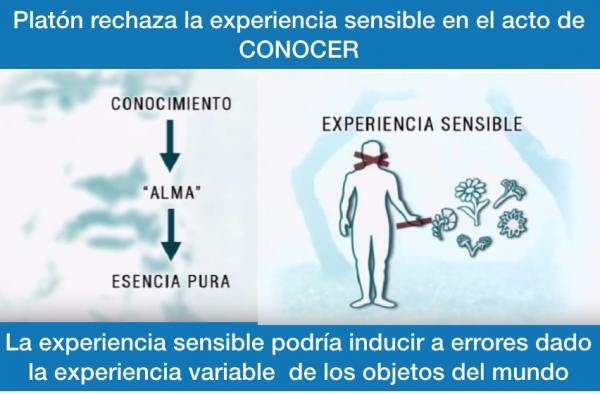
Image: Resources and skills
The irascible soul.
This part of the soul corresponds the virtue of fortitude or andreias. He is located in the chest, in the heart and Plato does not make it clear if he is immortal or not.
"Do we consider death to be something? (…) Is it something other than the separation of the soul from the body? And is being dead is this: that the body is alone in itself, separated from the soul, and the soul remains alone in itself separated from the body? Is death nothing but this? "
In the "myth of the winged chariot" it represents the good horse that obeys the instructions of the charioteer. This is the horse that pulls the charioteer into the world of Ideas where he can contemplate the Idea of Good, the highest of all.
“Let's talk about the irascible part; Do we not say that it always and entirely leads to domination, to victory, and to the desire for glory? Would it be appropriate, then, that we call her a friend of disputes and honors?
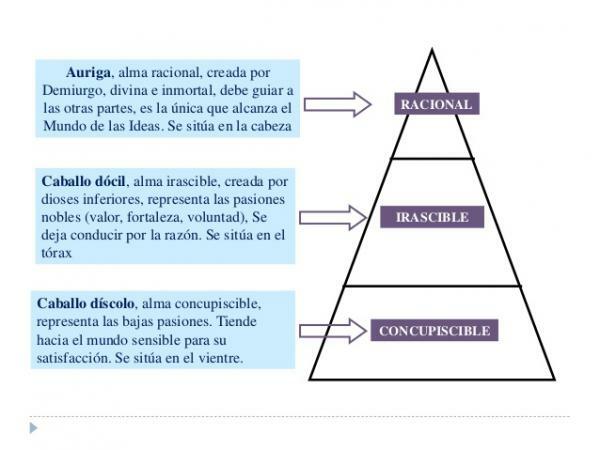
Image: Slideshare
The Concupiscible soul.
It is the deadly part of the human soul and is subjected to passions and desires humans. It is more closely related to the body, it is more united to it. She is responsible for appetites: sexual, food, power, fortune, etc. It is because of its proximity to the body that the irascible soul dies when it dies. It is located in the liver.
In the "myth of the winged chariot", he represents the bad horse, to the disobedient and who pulls the car towards the sensible world, that of physical objects and appearances. The virtue of temperance corresponds to him, and in the polis they would be the artisans and workers.
In the Phaedo, says Plato in relation to the body:
He fills us with loves and desires, fears and ghosts of all kinds, and enormous triviality (...) Because, in effect, wars, revolts and battles are originated by no other but the body and the desires of this. For because of the acquisition of wealth all wars originate, and we are forced to acquire them by the body, being slaves of its cares. That's why we don't have free time for philosophy, with all those things of his. But the last straw is that, if we have some free time from their care and we dedicate ourselves to observing something, intruding again in our investigations it causes us disturbance and confusion, and disturbs us in such a way that because of it we are unable to contemplate the truth.
In the Phaedrus, Plato makes a description of the nature and fall of the soul in the sensible world, with the myth of the winged chariot, which explains how the soul, after falling from the world of Ideas, is incarnated in a Body. This opens the door to later theories about immortality and transmigration of souls.
If you want to read more articles similar to Plato's conception of the soul, we recommend that you enter our category of Philosophy.

